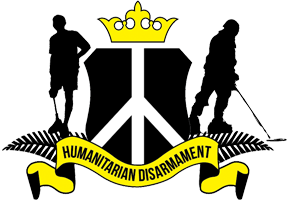2013 looks set to be a busy year (as always) for the community of governments and non-state actors seeking to advance humanitarian disarmament, with events including the final Arms Trade Treaty negotiations, a conference to consider the humanitarian impact of nuclear weapons, and the launch of a new campaign to stop killer robots. They take place against a backdrop of continued conflict and armed violence in several countries, decreasing aid levels (including for humanitarian mine action), and a perpetually ‘broken’ United Nations (UN) disarmament machinery.
On March 4-5, Norway is holding a conference to consider the humanitarian impacts of nuclear weapons. More than 100 states have registered to attend, including humanitarian disarmament stalwarts Austria, Chile, Indonesia, Mexico, New Zealand, and South Africa. One big question, however, is will France, Germany, or the United Kingdom show? And how will the United States react? Any follow-up process to the Oslo conference depends on how prepared the participating states are to deliver on their nuclear disarmament commitments.
Less than two weeks later, on March 18-28, the final negotiating conference of the Arms Trade Treaty will be held at the UN in New York, perhaps resulting in the adoption of a final agreement or, equally-likely, in lack of consensus on an agreement, thus kicking the text down the road again. With the domestic gun control debate raging in the background, it is unclear what influence, if any, the National Rifle Association will have on the US position at the negotiations.
At the same time as the Preparatory Committee for the 2015 Review Conference of the Nuclear Non-Proliferation Treaty begins in Geneva on April 22, over in London a coalition of non-governmental organizations will be launching an international campaign to stop ‘killer robots‘ or fully autonomous weapons. An initial focus for the campaign will be the report on lethal autonomous robotics by UN special rapporteur on extra-judicial killings Christof Heyns, that will be delivered to the UN Human Rights Council during its second session beginning May 28.
As the second term of the Obama Administration gets underway, humanitarian disarmament challenges will increasingly become legacy benchmarks for his presidency. In the coming months the administration is understood to be preparing to announce several new policy directives on disarmament, including on the long-awaited review on US policy on banning landmines. A positive decision would bolster the Mine Ban Treaty in the lead-up to its 3rd Review Conference, which looks set to be held in Maputo, Mozambique during the first half of 2014.
The humanitarian disarmament spotlight on Africa will intensify when Zambia hosts the 4th annual meeting of the Convention on Cluster Munitions in Lusaka on September 10-14. Universalization of the ban convention has slowed significantly over the past year and condemnations of the Syrian regime’s relentless use of cluster munitions have tapered off so it is hoped that Africa will provide the ban movement with an energy boost.
The number and range of arms used in Syria–including prohibited cluster munitions and landmines as well as incendiary weapons, and explosive weapons with wide-area effects in populated areas–have resulted in tens of thousands of civilian casualties and an ever-worsening humanitarian situation. Elsewhere conflict and armed violence continues to claim civilian lives in countries including Afghanistan, Burma (Myanmar), Colombia, Iraq, Mali, Nigeria, Pakistan, and Sudan.
While several like-minded governments are working to advance the humanitarian disarmament agenda in close cooperation with UN agencies, the International Committee of the Red Cross (ICRC), and civil society campaigners, back at the UN traditional multilateral diplomacy on arms control and non-proliferation has ground to a halt. The Conference on Disarmament remains paralyzed and for the first time in years the Convention on Conventional Weapons does not have a program of substantive work, despite efforts to promote expert review of the protocol on incendiary weapons. A ‘break-though’ seems unlikely, meaning change will have to come from outside.
This overview doesn’t seek to hit on all the highlights, meetings, and actions to come in 2013. For more information, check the Calendar of upcoming events and follow us on Twitter. Please also see the Chronology, which charts significant moments and milestones by the humanitarian disarmament movement.
Photo: This forty-foot metal statue of St. George brandishing a crucifix as he slays a “nuclear dragon” made from ballistic missiles was donated to the UN by the Soviet Union in 1990 and stands just inside the 47th Street entrance at the UN in New York. (c) Mary Wareham, October 2012.


Leave a Reply